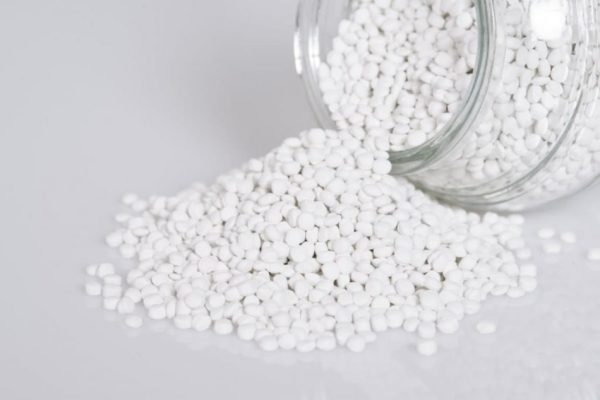
Among the filling and modifying materials for plastics, calcium carbonate occupies an unshakable important position. Calcium carbonate is divided into heavy calcium carbonate and light calcium carbonate. So, in plastic products, is it better to use light calcium carbonate or heavy calcium carbonate?
Some people use sedimentation volume (with anhydrous ethanol as the sedimentation medium) to distinguish between heavy calcium carbonate and light calcium carbonate, that is, the sedimentation volume above 2.5mL/g is light calcium carbonate, and 1.2-1.9mL/g is heavy calcium carbonate.
We distinguish them based on the different production processes. Heavy calcium carbonate is made by mechanical crushing and sorting of ore, and light calcium carbonate is made by calcining, digesting and recarbonating ore.
Some people mistakenly believe that light calcium carbonate is lighter based on the phenomenon that the same weight of calcium carbonate has different volumes when naturally accumulated. In fact, the apparent density of the two is different, and the actual density difference is very small. The actual density of heavy calcium carbonate is 2.6-2.9g/cm3, while that of light calcium carbonate is 2.4-2.6g/cm3.
Some people have done comparative tests of adding heavy calcium and light calcium to rubber. The conclusion is that under the same dosage and the same processing conditions, adding heavy calcium is easier to mix and process, easier to disperse in the rubber matrix, and the tensile strength of adding heavy calcium is higher than that of adding light calcium, but the rubber filled with heavy calcium has a large shrinkage rate and a rough surface. The heavy calcium used is -400 mesh, and its price is only half of the light calcium used for the control, and its economic benefits are very considerable.
The use of heavy calcium and light calcium in plastic products is similar to rubber products. Some manufacturers reflect that using -400 mesh heavy calcium instead of light calcium under the same conditions has obvious advantages for products sold by weight, but if the products are sold by length, area or number, heavy calcium has no advantage over light calcium.
From an academic point of view, there are many differences between heavy calcium and light calcium, such as different crystal forms, different specific surface areas, different oil absorption values, etc., and the particle size and distribution of -400 mesh heavy calcium and light calcium are very different. In what form do the particles of heavy calcium or light calcium exist in the plastic matrix? Are they distributed individually in the matrix macromolecules, or are they distributed in the matrix resin in the form of loose aggregates? What is the interface state between these particles and the resin macromolecules? These are directly related to the mechanical properties of the material.
Whether to use heavy calcium or light calcium in plastic products cannot be generalized. It should be based on giving full play to their respective advantages and combining technical and economic factors for comprehensive consideration before deciding on the trade-off.
For example, in the production of polyvinyl chloride artificial leather, the manufacturing process can be divided into scraping method, calendering method and extrusion method, and the scraping method uses polyvinyl chloride paste resin, which requires the addition of a large amount of plasticizer. The oil absorption value of light calcium is 4-5 times higher than that of heavy calcium. Therefore, using light calcium consumes more plasticizer than using heavy calcium to achieve the same flexibility. If the amount of plasticizer can be reduced, using heavy calcium may be more economical.
Another example is polypropylene woven bags, woven fabrics, strapping tapes and other unidirectional stretch products. When heavy calcium and light calcium are used as fillers, no difference in length is found. After research, it is found that most of the filler particles are located in the gaps between the macromolecules formed by stretching. After several times of stretching and rapid cooling, the shape of the macromolecules is quickly frozen, and the real density of light calcium and heavy calcium is almost the same, so the impact on the final length of the product is not obvious. On the other hand, heavy calcium has better processing fluidity than light calcium and is much cheaper. Therefore, heavy calcium occupies an absolute dominant position in such unidirectional stretch products.
How can calcium carbonate be better applied to the plastic industry?
Calcium carbonate has become one of the indispensable and important raw materials in the plastic industry. The rapid development of the calcium carbonate industry has provided the plastic industry with material conditions for selection and exploration. Its good application in plastic materials has also guided the development of the calcium carbonate industry.
Here, we hope that powerful enterprises in the calcium carbonate industry will not only make good calcium carbonate products, but also further develop new plastic materials and new products with calcium carbonate as the main raw material, rather than simply producing a certain product and forcing the plastic industry to use it.
